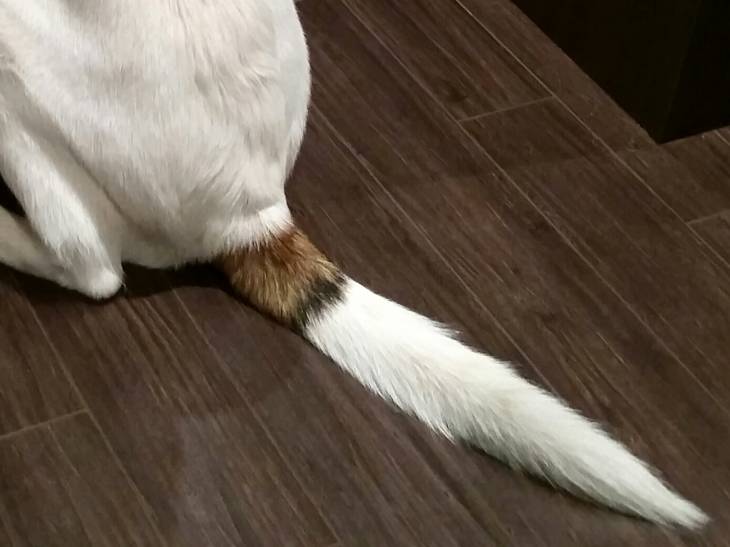Is Your Dog’s Tail Down? What Your Pooch May be Telling You
The phrase “tail between your legs” is shorthand for being sorry and contrite in the human world. When our dogs literally do this action, we can figure out he’s communicating with us on some level. But does it have the same meaning as our own colloquialism?
Different Heights - or Lows - Mean Different Things

Like a lot of dog behaviors, a downward tail position is not marked by one universal definition. In fact, the message that your dog may be telling you can be quite subtle. So much so, it may take some scrutiny to pinpoint precisely what is happening.
Not surprisingly, a downward tail could be an indicator of submission. But it can also be symbolic of a dog feeling afraid or anxious. The tail’s position will indicate his emotional level; the tighter it’s tucked toward his body, the more submissive, fearful, or anxious the dog is feeling.
At the same time, a low hanging dog tail could mean pretty much the exact opposite. Specifically, it could be an indication that your pooch is feeling relaxed and comfortable. This happens because the dog is essentially allowing the tail to follow its natural curve.
There May be a Medical Reason Behind the Tail’s Position
If your normally bouncy, energetic dog persists to have long intervals where his usually straight or upward-pointing tail is down, he could be suffering from a condition called limber tail. Also known by names such as cold water tail, broken wag, or limpy tail, the condition could be brought on by excessive exercise, too much time in a crate, or even a change in a climate. While it may cause your pooch some discomfort, it isn’t that difficult of a condition to treat - provided that you get your friendly neighborhood vet involved in the healing process.
Other Possible Medically-Based Reasons for a Down Tail
While limber tail is not too disconcerting, there are a few other tail-specific injuries that your pooch can pick up that do demand greater scrutiny and care. A tail that is consistently down may indicate that your pooch is in a substantial amount of pain. Some of this discomfort could stem directly from the tail although it can also be linked to pain incurred from the base of your dog's spine or his hindquarters.
related resources
related resources
Certain kind of tail injuries, such as a cut or a bite, could look a bit worse than they actually are. This is because there is a large quantity of blood that flows though the tail. If the tail’s skin is broken, the resultant bleeding could be prolonged and may take longer to heal compared to other parts of the body.
Sometimes, the tail injury could be self-inflicted. A nervous dog may chomp on the end of their tail to calm themselves down. A tendency to bite their tail could also be indicative of a flea problem.
While these particular conditions are relatively mild, injuries coming from the base of the tail are not. In these cases, a downward pointing tail could indicate an injury to the muscles that help him pee and poop. This type of injury could coincide with other medical conditions that should be treated, such as constipation or incontinence.
On most breeds, a lack of tail movement can lead you to conclude this particular injury may be afoot. If your dog has swollen hindquarters and does not lift his tail in preparation for evacuating his bowels, there is a great chance that there is something foul happening with his bowel and bladder muscles. If you observe either symptom, schedule an appointment with your vet post haste.
Learn the Language of Dog Through Your Pooch’s Tail
The movements of your dog’s tail are not arbitrary, and knowing how to interpret how it moves, bends, shakes, and wags is an excellent way to further the bond between you and your dog. In this case, knowing precisely why your dog’s tail is pointed down will enable you to give him comfort or give him sufficient aid in a manner in which craves or needs. This will ultimately allow your pooch to deepen his trust in you; an action that could make the bond between you and him as strong as possible.

